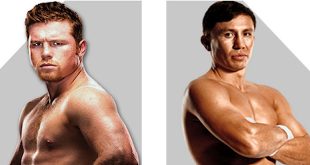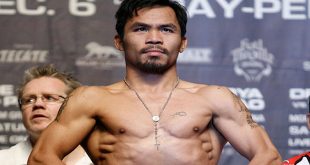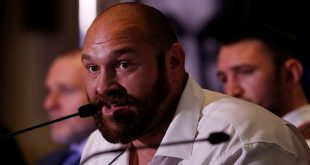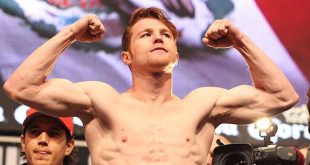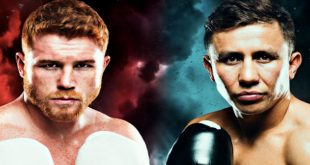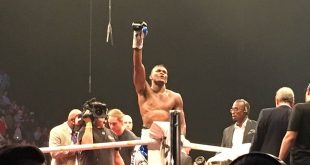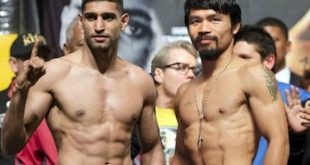The cruiserweight division is 30 years old this year. Historically, the class has failed to receive the attention it deserves, seemingly looked upon by many, fighters and fans alike, as a stepping stone for boxers from lighter divisions in their quest for fame, glory and huge pay days in the heavyweight class or a home for those that just can’t cut it up with the ‘big boys’.
This perception may have been true a few years ago, but these days the cruiserweight contenders are just that, they are not wannabe heavyweights or chubby light heavyweights, they are cruiserweights by choice.
Over the years, the cruiserweight division has also suffered with the confusion caused by its positioning between heavyweight and light heavyweight.
One suggestion floated to rectify this is to revert to it’s original title, junior heavyweight. Another being to rebrand it as heavyweight with the current class carrying that moniker redefined as, more appropriately these days, super heavyweight.
That aside, cruiserweight contests have been gaining in popularity recently with the media and boxing fans alike, many claiming their preference for exciting cruiserweight action over the grossly hyped and oh so boring heavyweight division.
This newly found popularity has been attributed by many in the know to the magnificent Steve ‘USS’ Cunningham vs Tomasz ‘Goral’ Adamek IBF championship bout which took place in December 2008 and shown live on network television by Versus.
Whilst this may be true, if the television networks had shown more of the magnificent cruiserweight battles of the past, fans would have been hooked far sooner.
All the way back in 1986, Evander Holyfield vs. Dwight Muhammad Qawi I, which stands alongside Cunningham vs. Adamek as one of the greatest cruiserweight fights of all time, showed the boxing public just how great this division can be.
Holyfield vs. Qawi had it all, but still the class was ignored. Jirov vs. Toney in 2003 was another magnificent battle. I could name many more contests of note but they are all covered in detail later.
The point is that the networks didn’t show these great bouts and it was their, and our, loss. We can only hope that the TV companies have learned from their past mistakes and show more cruiserweight battles.
OK, enough on that, this article is about the history of the cruiserweight division, so without further ado, here we go.
In 1979, the cruiserweight division was inaugurated by the WBC to create a 190lbs, which was later increased to 200lbs, limit class created to bridge the ever widening gap between the light heavyweights and the heaviest of the heavyweights, a decision that makes even more sense today.
Can you image how suicidal it would be for someone weighing between 176 and 200 pounds getting in the ring to fight one of the Klitschko brothers, who regularly weigh-in around 240 to 250 lbs?
The only other major sanctioning body of the time, the WBA, followed suit in 1982.
Whilst the division was created in 1979, there was no champion in the first year as the first title fight, which took place in Split, Yugoslavia, between Mate Parlov and Marvin Camel, ended in a draw.
Marvin Camel – WBC
31st March 1980 – 25th November 1981
Marvin Camel was the inaugural cruiserweight world champion, becoming the first holder of the World Boxing Council belt in March of 1980 in Las Vegas, Nevada when he beat Yugoslavia’s Mate Parlov by unanimous decision, 144-141, 148-141 and 149-141, after fifteen hard fought rounds.
Camel lost his title to Carlos “Sugar” De Leon in his first defense on the 25th November 1980.
Carlos De Leon – WBC
25th November 1980 – 27th June 1982
Carlos “Sugar” De Leon, a native of Trujillo Alto, Puerto Rico, faced current champion Marvin Camel, on the 25th November 1980, on the under card of Sugar Ray Leonard and Roberto Duran’s second fight in New Orleans.
At the end of fifteen action filled, close rounds De Leon was declared the new WBC cruiserweight champion by majority decision, 142-145, 145-145 and 141-145.
In a rematch, on the 24th February 1982, De Leon again faced Camel. This time the fight didn’t go the full fifteen rounds as De Leon stopped Camel in the eight round.
Next up for De Leon, on the 27th June 1982, was Las Vegas’ S.T. Gordon at the Front Row Theater in Cleveland, Ohio. In a shock upset De Leon, the bookies favourite, was stopped in the second round.
Ossie Ocasio – WBA
13th February 1982 – 1st December 1984
Ossie Ocasio defeated Robbie Williams in the first cruiserweight championship bout sanctioned by the World Boxing Association
Ossie Ocasio successfully defended the WBA belt he won in South Africa, firstly against Young Joe Louis in Illinois on the 15th December. Next up, just five months later, was Texan Randy Stephens. It was a full year before Ocasio traveled back home to Puerto Rico to defeat Kenyan John Odhiambho.
In December, 1984, Ocasio traveled back to the country he first won the title, South Africa, to face Piet Crous. Home advantage came into play for Crous though as the belt became his with a very close, but unanimous decision.
S.T. Gordon – WBC
26th June 1982 – 17th July 1983
Gordon caused a massive upset when he stopped current champion Carlos De Leon, in just five minutes and 51 seconds, to lift the WBC belt on the 26th June 1982.
For his first defense, on the 16th February 1983, faced Los Angeles, California’s Jesse Burnett at the Bryne Meadowlands Arena in New Jersey. Gordon retained his title by stopping Burnett in the eighth round.
A rematch with De Leon followed at the Dunes Hotel in Las Vegas on the 17th July 1983. De Leon dropped Gordon in the first round and again in the twelfth en route to a unanimous decision win. With this victory De Leon became the first boxer to win the world Cruiserweight title twice.
Carlos De Leon – WBC
17th July 1983 – 6th June 1985
After successfully beating S.T. Gordon and winning back the title he previously held, De Leon then faced Alvaro Yaqui Lopez at the Civic Auditorium in San Jose, California on the 21st September 1983. De Leon dominated the fight and no one ringside was surprised when he stopped Lopez in the fourth round.
On 9th March, 1984, De Leon took a decisions victory over Las Vegas, Nevada’s Anthony Davis. Three months later De Leon beat Nigerian Bash Ali, also by unanimous decision.
One year later, on the 6th June 1985 at the Riviera Hotel and Casino in Las Vegas, De Leon faced Chicago’s Alonzo Ratliff. After twelve close rounds De Leon lost his coveted title for the second time by split decision, 113-116, 117-114 and 114-117.
Marvin Camel – IBF
13th February 1983 – 6th October 1984
Marvin Camel, a member of the Salish Kootenai Nation of the Flathead Indian Reservation in Northwestern Montana, holds the distinction of being the first person recognized as cruiserweight champion of the world by two different professional sanctioning bodies as on 13 December 1983 Camel beat Roddy MacDonald to win the, newly formed, International Boxing Federation’s cruiserweight belt.
In his first defense of the IBF crown, on the 6th October 1984, Camel was stopped, by Chicago’s Lee Roy “Solid Gold” Murphy in the fourteenth round.
Lee Roy Murphy – IBF
6th October 1984 – 25th October 1986
Lee Roy Murphy defended the IBF belt, he won from Camel on the 6th October 1984, three times, firstly with a twelfth round stoppage of Young Joe Louis in December 1984, then some 11 months later knocking out Zambia’s Chisanda Mutti in the twelfth round.
In his next outing, on the 9th April 1986 he got the job done a little quicker by knocking out Jacksonville, Florida’s Dorcey Gaymon in the ninth round.
“Solid Gold” Murphy finally lost his belt after being stopped in the tenth round by Ricky Parkey on the 25th October 1986.
Piet Crous – WBA
1st December 1984 – 27th July 1985
South African Piet Crous defended the WBO belt, he won from Ossie Ocasio in December 1984, for the first time against Texan Randy Stephens at the Superbowl in Sun City, South Africa on the 30th March 1985. The fight between these two former sparring partners ended in the stoppage of Stephens in two minutes and 22 seconds of the third round.
In his second, and final, defense Crous faced the diminutive Dwight Muhammad Qawi, who had changed his legal name from Dwight Braxton after winning the WBC light heavyweight title in December 1981, at the Superbowl in Sun City, South Africa on the 27th July 1985. A thrilling, close match was ended only after Crous was knocked down twice in the eleventh round.
Alonzo Ratliff – WBC
6th June 1985 – 21st September 1985
On the 21st September 1985 Alonzo Ratliff defended the WBC title, he’d won three months earlier from Carlos De Leon, against Bernard “The Bull” Benton at the Riviera Hotel & Casino, Las Vegas. The battle went the full twelve rounds and Benton became the new WBC cruiserweight champion by unanimous decision as the judges scorecards read 112-117, 113-115 & 113-115
Dwight Muhammad Qawi (Formally Dwight Braxton) – WBA
27th July 1985 – 12th July 1986
Former WBC light heavyweight champion Dwight Muhammad “Camden Buzzsaw” Qawi claimed the WBA cruiserweight title on 27th July 1985 by knocking out South African Piet Crous.
Qawi’s first defense was against “Neon” Leon Spinks at the Lawlor Events Center in Reno, Nevada on the 22nd March 1986. Qawi’s pressuring style proved to much for the much taller “Neon Leon”, the “Camden Buzzsaw” teased and tormented Spinks for six rounds before finishing off the former heavyweight titlist.
Former Olympian Evander Holyfield was Qawi’s next challenger. The fight. in Holyfield’s home town of Atlanta, Georgia, was destined to be one of the most dramatic and exciting fights of the ‘80s.
The action-packed thriller saw both fighters absorb tremendous punishment. Holyfield started at a blistering pace but soon Qawi’s pressuring style slowed “The Real Deal” and then both dug deep and put on one of the great battles of the era and arguably the greatest fight ever at cruiserweight.
A draw would have been the perfect decision, Muhammad Qawi controlled the early rounds and Holyfield dictated the pace in the later rounds, but after fifteen grueling rounds Holyfield was declared the winner by split decision with the judges scorecards reading 140-144, 143-141 & 138-147.
After this magnificent fight it was reported that Holyfield, who had lost fifteen pounds in weight during the fight, was hospitalized.
In December 1987 a rematch, this time for both the WBA and IBF cruiserweight titles, between Qawi and Holyfield took place. “The Real Deal” emerged victorious again after knocking the “Camden Buzzsaw” out in the fourth round.
Bernard Benton – WBC
21st September 1985 – 22 March 1986
Bernard “The Bull” Benton won the WBC title on the 21st September 1985 after defeating the then champion, Alonzo Ratliff, by unanimous decision.
For his first defense Benton was to face two-time world champion Carlos “Sugar” De Leon at the Riviera Hotel & Casino in Las Vegas. After twelve fascinating all-action rounds the judges saw it 114-117, 114-114 & 113-115 in majority favour of the challenger, Carlos De Leon, who became the first cruiserweight to hold the title three times.
Carlos De Leon – WBC
22nd March 1986 – 9th April 1988
On March 22 1986, once again in Las Vegas. De Leon joined the likes of Sugar Ray Robinson and Muhammad Ali in becoming one of the few boxers ever to win one division’s world championship at least three times, defeating Benton by decision.
The first challenger for Puerto Rico’s Carlos De Leon, in this his third title campaign, was Memphis Tennessee’s Michael Greer. It was expected to be an easy victory for De Leon, however Greer proved he wasn’t there to just make up the numbers pressuring and taking equal distribution of rounds until, in the eighth round, De Leon unleashed a tremendous series of uppercuts and jabs, knocking Greer against the ropes until Referee, Rudi Ortega, declared De Leon the winner.
On the 21st February 1987 De Leon locked horns with Italian heavyweight champion Angelo “Pietro” Rottoli. De Leon started hard and fast, pressuring the Italian constantly. It proved to much for Rottoli who, after the fourth round, retired whilst in his corner.
For his first fight of 1988 De Leon traveled to Atlantic City to face Uraguan Jose Maria Flores Burlon on the 22nd January. De Leon comfortably won the bout by unanimous decision as testified by the judges scorecards 119-110, 118-111 & 118-110
Next up for De Leon, on the 9th April 1988, an unification bout, at Caesars Palace in Las Vegas, with the WBA and IBF world champion Evander “The Real Deal” Holyfield. De Leon struggled to contain Holyfield and didn’t win a single round before being stopped, in the eighth, by the former Olympian.
Evander Holyfield – WBA
12th July 1986 – 15th May 1987
In what had been described as the best cruiserweight bout of all time for many years, only being equaled by the Cunningham-Adamek IBF title fight some 22 years later, Evander “The Real Deal” Holyfield became the WBA world champion by defeating, by a narrow split decision, Dwight Muhammad Qawi in a true battle royale.
Then on 14th February 1987, Holyfield performed a “Valentine Days Massacre” of Olympic teammate and Gold medal winner Henry Tillman, who had beaten Mike Tyson twice as an amateur, by knocking him out in the seventh.
Ricky Parkey – IBF
25th October 1986 – 15th May 1987
Ricky Parker secured the IBF belt by stopping Lee Roy “Solid Gold” Murphy in the tenth round at the Palazzo Dello Sport in Marsala, Italy on the 25th October 1986.
For his first defense Parkey again returned to Italy, this time the Palazzo Dello Sport in Lido di Camaiore, Italy, where he successfully stopped, in the twelfth, Zambian Chisanda Mutti on the 28th March 1987.
Next up for Parkey was the unification bout with the division’s new superstar, WBA champion, Evander “The Real Deal” Holyfield at the legendary Caesars Palace in Las Vegas. Holyfield steam rolled his way to a third round stoppage and another belt.
Evander Holyfield – WBA & IBF
15th May 1987 – 9th April 1988
After his unifying the WBA and IBF titles, when he stopped Ricky Parkey at Caesars Palace, “The Real Deal” flew to France, where he retained his titles with an eleventh round stoppage of former world champion Ossie Ocasio.
In his fourth and final fight of ’87, he faced Dwight Muhammad “Camden Buzzsaw” Qawi in a rematch of their classic July ‘86 battle. As before “ The Real Deal” came out the victor, the difference being that this time he knocked Qawi out in the fourth round.
Evander Holyfield – Universal
9th April 1988 – 4th December 1988
On the 9th April 1988 Evander Holyfield truly lived up to his “The Real Deal” name by becoming the first universally recognized world cruiserweight champion when he knocked out the WBC’s defending world champion Carlos De Leon in the eighth round.
After winning everything possible in the cruiserweight division “The Real Deal” then went to dominate the heavyweight division for years to come.
But who was going to step in to the void left by the departing Holyfield?
Taoufik Belbouli – WBA
25th March 1989 – 25th September 1989
The first to win one of the titles vacated by the magnificent Evander Holyfield was French-Tunisian Taoufik Belbouli who, on the 25th March 1989 at the Sheraton Hotel in Casablanca, Morocco, stopped Tennessee’s Michael Greer in the eighth round to secure the vacant WBA title.
Belbouli’s championship recognition was withdrawn due to his refusal to defend his title against a mandatory challenger.
On the 22nd March 1990, at the Sports Palace in Madrid, Spain, Belbouli attempted to win back the title against Robert “Preacherman” Daniels. The bout was deemed a draw.
Carlos De Leon – WBC
17th May 1989 – 27th July 1990
Holyfield’s leaving the division to pursue the world heavyweight championship presented De Leon the opportunity to break his own record and win the title for a record fourth time. De Leon traveled to Docklands in London, England where he beat the WBC’s number two challenger, Londoner Sammy Reeson, by a ninth round knock out and in doing so breaking his own record and crowning himself world cruiserweight champion once again.
England again was De Leon’s destination for his first defense, of his newly won crown, against Johnny “The Entertainer” Nelson. After the thrilling twelve round bout the judges couldn’t decide a winner with one giving the decision to De Leon with 116-115 score and another giving it to Nelson by a dubious 111-117 and the other seeing it a 115-115 draw.
For his next defense De Leon was again in Europe, this time at the Outdoor Arena in Capo d’Orlando, Italy, where he faced Italian national champion Massimiliano “Momo” Duran. This close battle came to a premature end when DeLeon was disqualified for hitting after the bell to end the eleventh round.
Glenn McCrory – IBF
3rd June 1989 – 22nd March 1990
The battle for the IBF belt, vacated by Holyfield, saw England’s Glenn McCrory crowned champion by unanimous decision over Stockholm, Sweden based Kenyan Patrick Lumumba on the 3rd June 1989.
McCrory defended the belt against South African brawler Siza Makathini at the Eston Sports Academy in Middlesbrough on the 21st October 1989. McCrory knocked Makathini out in the eleventh to retain his title.
Next up was for McCrory was Youngstown, Ohio’s Jeff Lampkin on the 22nd March 1990. This was starting to look like a perfect match-up as the two protagonists countered each other constantly, both winning a round each, then just two minutes and 20 seconds into the third round Lampkin let rip with a cracking left to the body that sent McCrory down and unable to recover.
In 1993 McCrory unsuccessfully attempted to regain the IBF title against Alfred “Ice” Cole. The fight had been quite close until the sixth round when Cole sent McCrory to the canvas twice.
Robert Daniels – WBA
27th November 1989 – 8th March 1991
In November 1989 21 year old Robert “Preacherman” Daniels captured the WBA cruiserweight title, removed from Taoufik Belbouli, when he defeated Dwight Muhammad Qawi by a close split decision.
For his first defense, on the 19th July 1990, Daniels faced Craig “Gator” Bodzianowski, who fights wearing a synthetic prosthesis, called a Seattle Foot, after losing his right foot after a road accident in 1984, at the Kingdome in Seattle. After twelve bruising rounds Daniels won by unanimous decision to retain his title.
In the post fight interviews Bodzianowski, who had held his own throughout the bout, claimed he would have knocked out Daniels if the two ribs he had broken eight weeks prior hadn’t “popped out” again when he was caught by a Daniels punch in the second round.
Daniels flew across the Atlantic to face former WBA champion Taoufik Belbouli at the Sports Palace in Madrid, Spain on the 22nd November 1990. After a very close fight Daniels walked away with his title intact after the bout was declared a draw.
Next up for Daniels was former IBF light heavyweight champion Bobby “Matinee Idol” Czyz at the Trump Taj Mahal in Atlantic City on the 8th March 1991. Everyone was expecting Daniels to walk this fight and Czyz, who the bookies had as 4 1⁄2 to 1 underdog, was not thought to be technically diverse enough to overcome Daniels’ strength. The bookies and pundits were wrong and Czyz won his second title by a split decision.
Boone Pultz – WBO
12th March 1989 – 17th May 1990
On the 3rd December 1989, Maryland’s (Richard) Boon Pultz beat, by split decision, Norwegian Magne Havnaa in Copenhagen to capture the Inaugural WBO cruiserweight title.
Five months later, in the rematch, Norway’s most famous boxer of the era, Magne Havnaa, stopped Boon Pultz in the fifth round to become the second WBO cruiserweight champion.
 Boxing News Boxing News
Boxing News Boxing News
